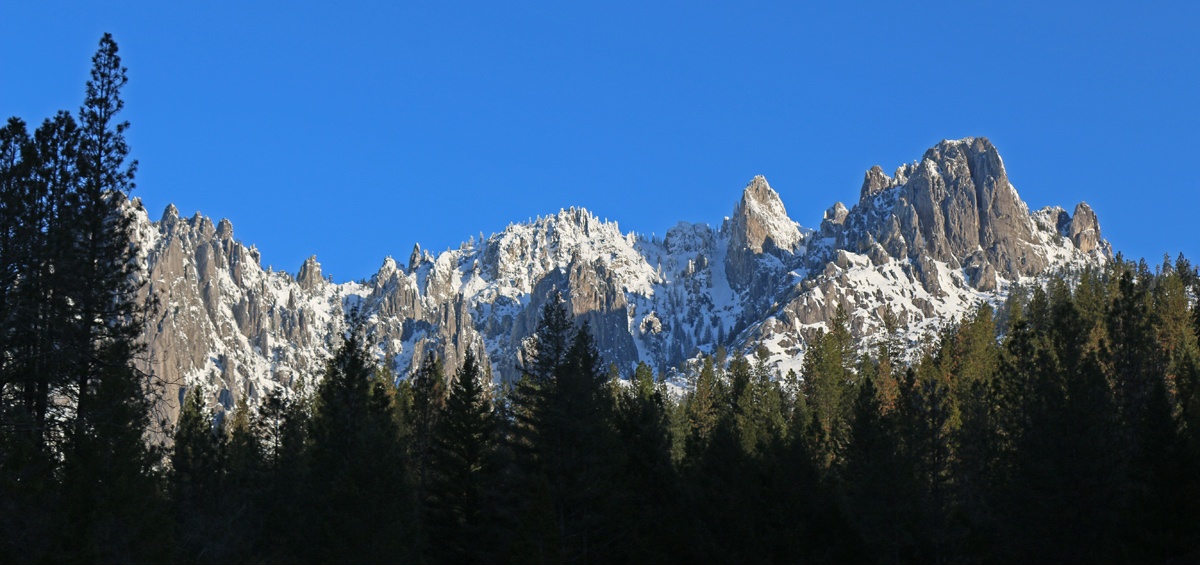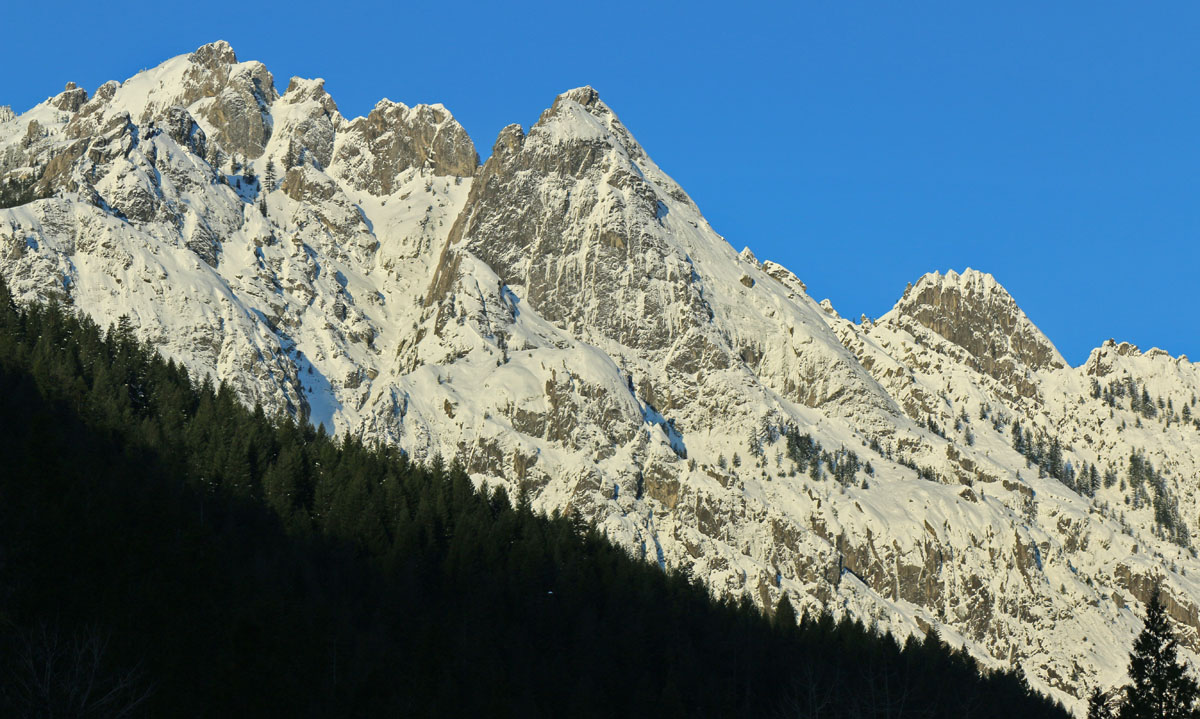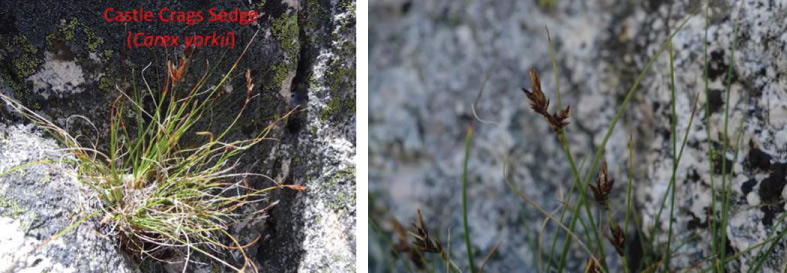Geologic History
Castle Crags State Park is within the Klamath Mountains geomorphic province. The eastern Klamath Mountains are built from the oldest rock in the range with the newest to the west. This is due to the continued accretions of oceanic crust added on to the western edge of North American continent. Rocks surrounding Castle Crags are mostly of the Ordovician-aged (443–490 million year old) Trinity ultramafic sheet.

The dramatic rock of the Castle Crags is the result of an intrusion of granitic magma around 160 million years ago. In the time since that intrusion, erosion has exposed the rock and shaped the spires and domes into what we see today.

Unique Plants
I have always been fascinated with plant biogeography and the Castle Crags State Park hold several unique plants (maybe more) due to the unique combination of ancient ultramafic soils and the newer plutonic intrusion. I first heard about a disjunct population of Brewer spruce (Picea breweriana) in the crags when I began researching Conifer Country. Since then several new plants have come into view.
At the 2019 Northern California Symposium of Botanists, Dana York took us on a climbing adventure into the crags. On a trip into the spires he discovered a new species of Carex. He went on to describe it and Derick Poindexter is working on naming it the Castle Crags carex (Carex yorkii). Watch the video below to learn more.
Take the time to stop at Castle Crags State Park next time you are travelling the Interstate-5 corridor through the Klamath Mountains. You will not be disappointed.
Read More:
- Geology of the Castle Crags
- Castle Crags State Park Brochure

